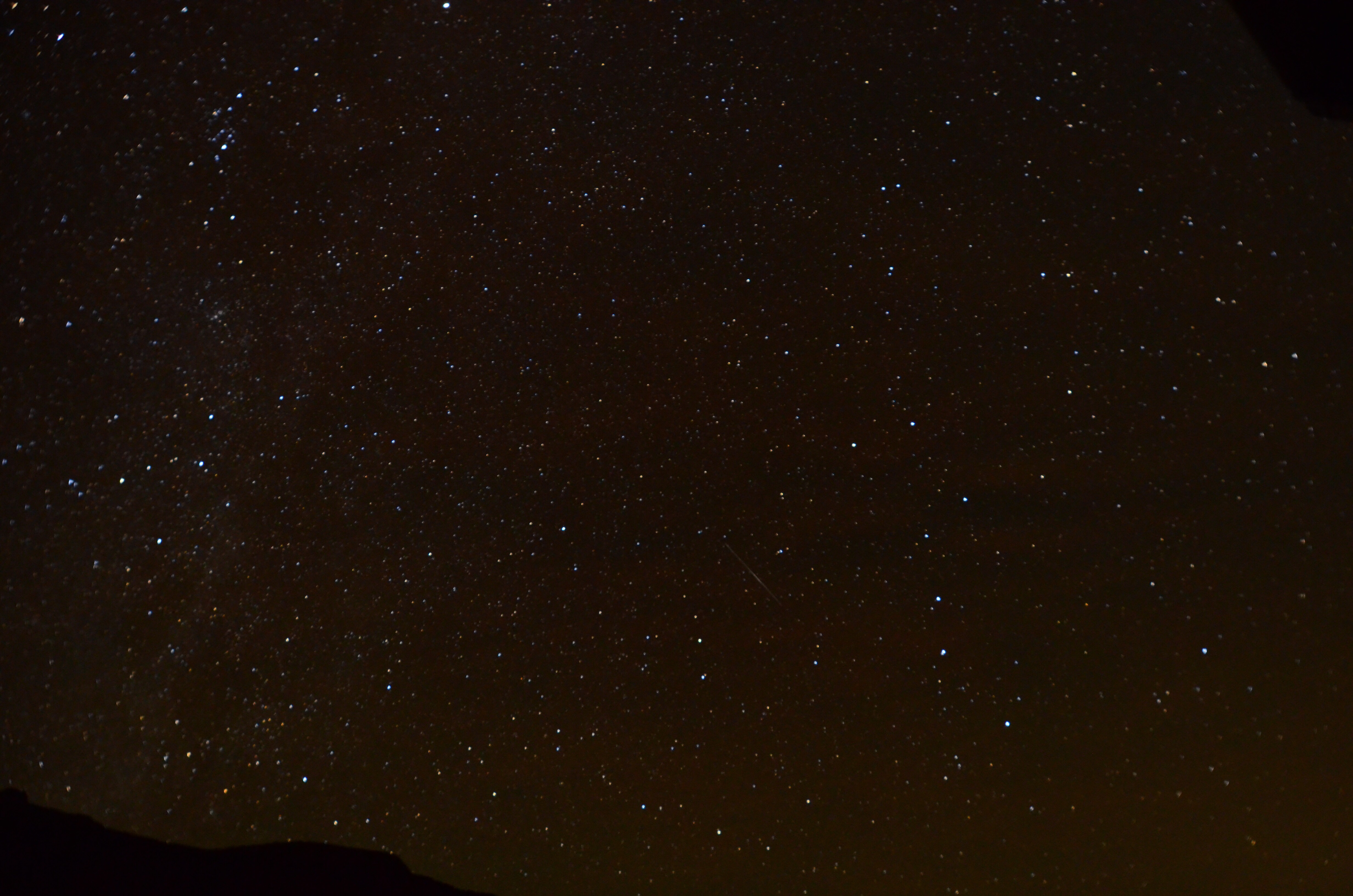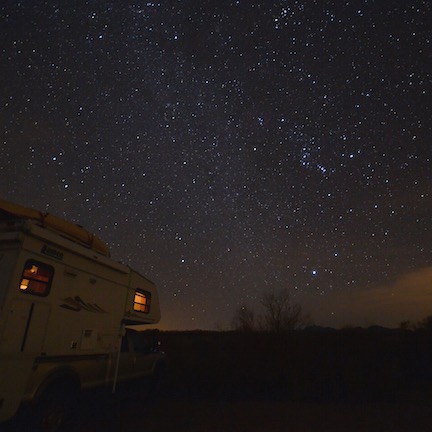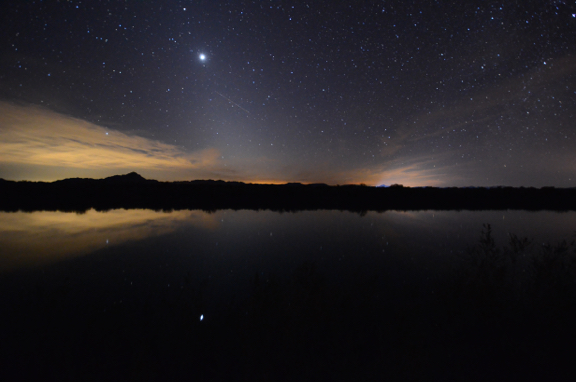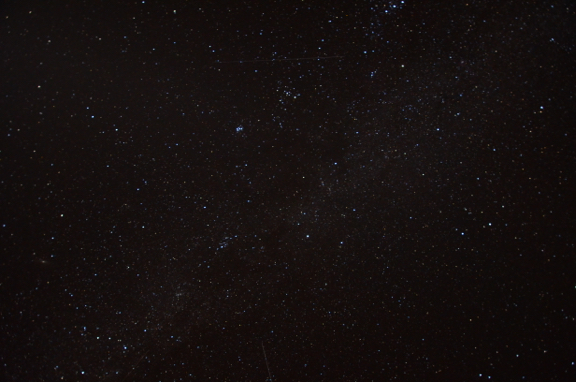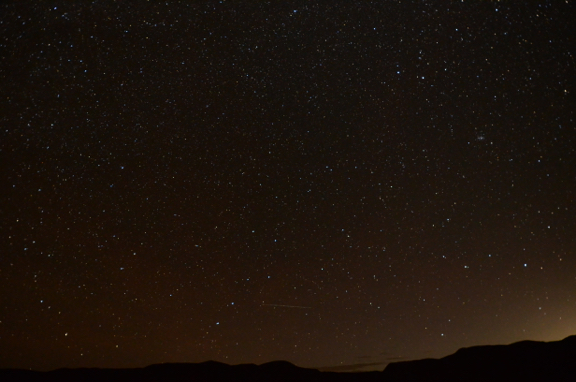I experience Phoenix rush hour traffic in my truck.
On Friday morning, I had to drive to Phoenix for the first day of a three-day art show. I had a setup window that required me to be there by about 7:30 AM. Because I’m camped out in the desert more than 100 miles west of there, I had to leave my camp at 5 AM.
I don’t like driving at night, but the moon was just past full and it illuminated the desert around me with a faint monochrome glow. There were few vehicles on I-10 at that hour — mostly semis — and I was able to easily maintain the 75 mph speed limit most of the way.
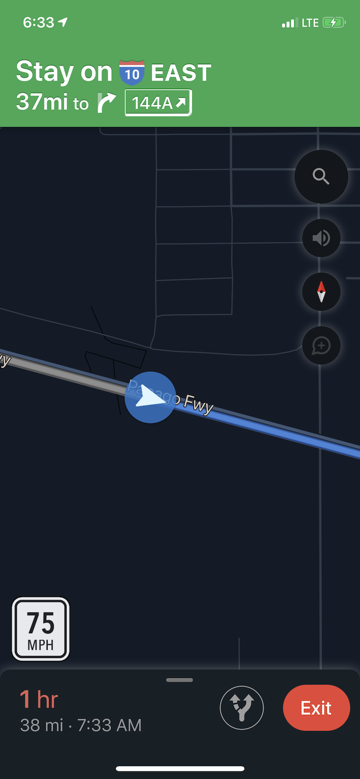
Here’s what I saw on Google Maps when I realized there was something wrong with the math.
I watched the readout on Google Maps on my iPhone as I got closer and closer to Phoenix. At one point, I noticed that the math didn’t seem right: I was moving along at 75 miles per hour and had only 38 miles to go, yet Google said it would take a full hour. How could that be? Even when I slowed down when the speed limit dropped to 65 and probably 55 in the city, I should still be able to make it in much less than an hour. Like maybe even 30 minutes.
What I hadn’t accounted for, of course, was rush hour traffic, which I experienced firsthand about 15 minutes later. Stop and go — just like I used to deal with when I had a “real job” in corporate America. I realized that it had been years since I’d been stuck in traffic like that — the kind of traffic where it takes you 15 minutes to go 3 miles. But this was traffic on steroids: at certain points, there were five lanes of vehicles completely stopped.
What was cool, however, was sitting up high in my big truck, being able to look over the tops of the sedans and compact cars ahead of me. I had never realized how much taller my truck was than the average passenger vehicle. There were few semis on this part of the road — I suspect the drivers were smart enough to exit for a truck stop breakfast instead of dealing with the mess. Instead, most vehicles were commuters with just one person per car, leaving the HOV lane pretty much open. And, as I could easily see, the red taillights went on for miles ahead of me.
I did make it to my destination on time. When I’d left camp at 4:57 AM, Google told me I’d arrive at 7:34 AM. I arrived at 7:35. That’s pretty amazing.



